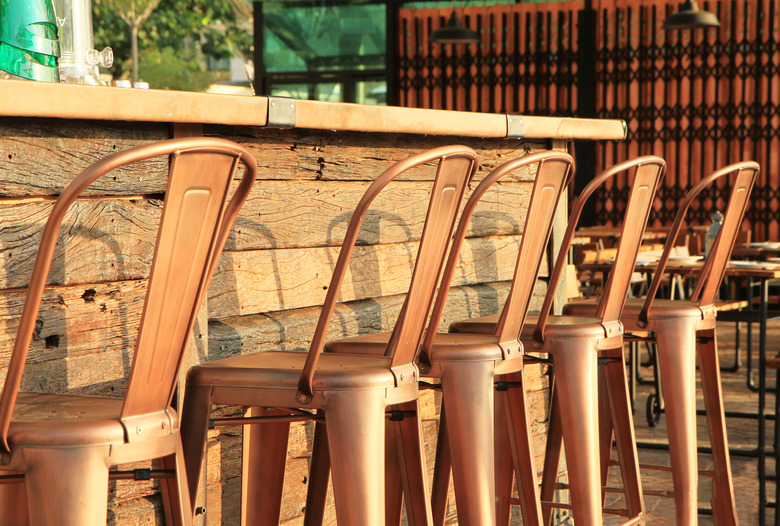How To Remove Paint From Metal Without Sanding
We may receive a commission on purchases made from links.
If you want to avoid sanding a piece of metal to remove old paint, it's probably because you don't want to scratch the metal. If that's true, you probably won't want to use an angle grinder either, which is a tool that can remove paint very quickly, and you probably also want to avoid scrubbing with a wire brush. That leaves chemicals and heat as your options.
Whichever you choose, you're still going to have to do some scraping, but if you do it with a plastic putty knife or plastic stripping brush, you'll avoid scratches. Metal implements work better and are preferable if you can tolerate a few light scratches, but depending on the type of paint, you may be able to avoid doing any heavy scraping.
Baking Soda and Vinegar for Small Objects
Baking Soda and Vinegar for Small Objects
Baking soda and vinegar have many uses around the house, but you might not have suspected that they also remove paint. Use one or the other but not both because one is alkaline (baking soda) and one is acidic (vinegar), and they cancel out each other's effects when you use them together. They are best used for small objects, such as hinges, that will fit in a pot on the stove.
Fill a pot with water and for every quart, add 1/4 cup of baking soda or vinegar. Put the pot on the stove, bring the water to a boil, and drop in the metal object you want to strip. Wait for about 15 minutes and then remove the object with a pair of tongs and scrape off any paint that remains using a plastic putty knife or stripping brush.
Use Paint Stripper for Large Objects
Use Paint Stripper for Large Objects
Paint stripper is a more viable option for a large metal object, such as a railing or gate. All products work in the same way, softening the paint and making it bubble up so you can scrape it off, but some work faster than others. Generally, the faster strippers contain gnarly chemicals, like methylene chloride, so if fumes and toxicity are concerns, use a citrus- or soy-based stripper and give yourself more time to complete the job.
Apply the stripper to the painted surface with a paintbrush, wait for the paint to bubble up, and then scrape it off with a metal or plastic implement. Depending on the type of paint and the number of layers, you may need to do this more than once. To remove residue and leave a super-clean surface, wipe down the metal with acetone, alcohol, or vinegar after you've finished with the stripper.
Strip Paint With Heat
Strip Paint With Heat
You can melt paint off metal if you apply enough heat for a long-enough length of time using a heat gun but be careful because high heat applied for an extended period can warp metal. Start by using the heat gun on its lowest setting and keep it moving back and forth along a small section of the painted surface until the paint starts to melt and bubble up. If nothing happens, increase the heat setting in steps until you get results.
Once the paint softens, you'll be able to scrape it off, but because the paint is hot and will melt plastic scrapers, you'll need metal ones. Just keep the angle of the scraper low relative to the painted surface and use light pressure to avoid scrape marks. This method will leave a significant amount of residue that you'll have to clean off with a solvent and a rag or plastic scrubbing pad.
